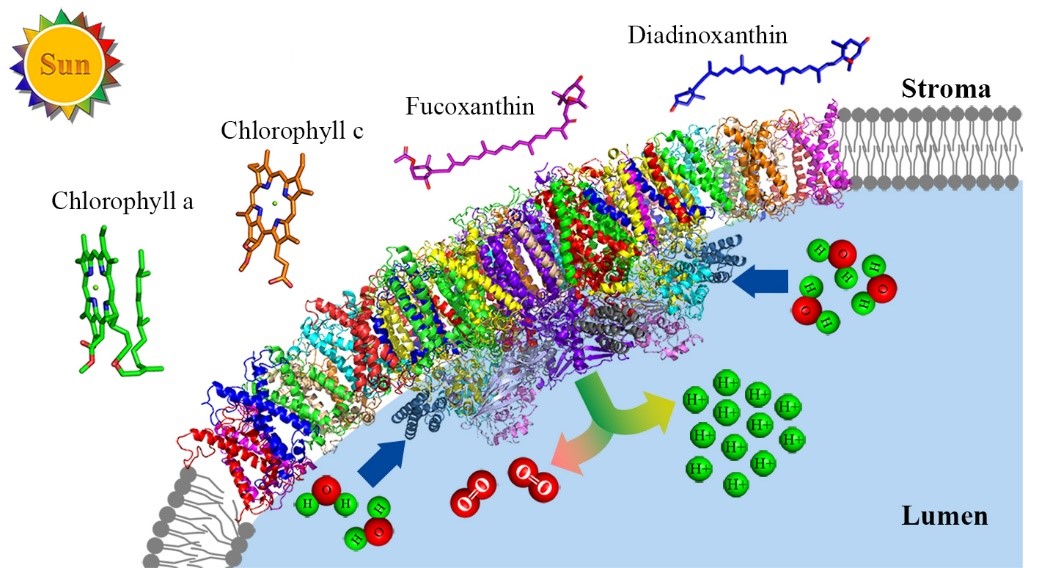
Researchers from Institute of Botany of the Chinese Academy of Sciences and Tsinghua University cooperated to determine the structure of the PSII-FCP supercomplex from a centric diatom Chaetoceros gracilis by cryo-electron microscopy at a novel resolution.
A large quantity of pigments is assigned in the supercomplex, which include 230 Chls a, 58 Chls c, 124 Fxs, and 2 Diadoxanthins (Ddx). Among these pigments, Chl c and Fxs are important for their ability to harvest blue-green light under water. One Ddx is confirmed in a monomeric FCP mediating the energy transfer towards the core, which render this Ddx as an ideal site for possible energy dissipation.
The paper was accompanied by a perspective written by Professor Claudia Büchel, one of the pioneers in the studies of diatom photosynthesis: "How diatoms harvest light". In this perspective, Prof. Claudia Büchel said: "The FCP structures solved are milestones on the way to understanding the high flexibility of LHC/FCP proteins, where the same purpose is served by similar proteins in a very different manner."

Fig.1. Model of a diatom PSII-FCPII supercomplex embedded in the thylakoid membrane (Image by IBCAS)

86-10-68597521 (day)
86-10-68597289 (night)

52 Sanlihe Rd., Xicheng District,
Beijing, China (100864)

